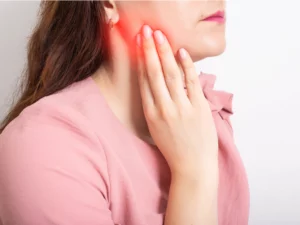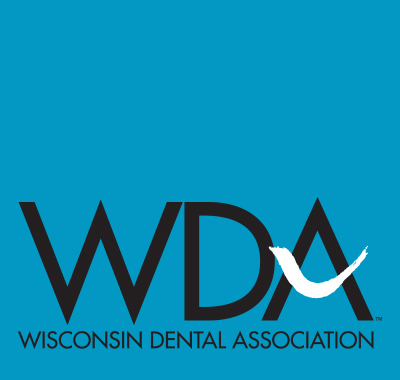Do you experience discomfort while eating, speaking, or even just opening your mouth? If so, you may have temporomandibular joint disorder (TMJ disorder). It is a disorder that affects the muscles around the jaw joint and causes discomfort, making daily activities more difficult.
It is essential to comprehend the causes, symptoms, and risks of TMJ to choose the best course of treatment. People with TMJ dysfunction could also have headaches, clicking or popping sounds in their jaws, and trouble chewing or completely opening their mouths.
Various factors cause TMJ, including stress, teeth grinding, jaw misalignment, arthritis, and past traumas. Let’s learn about practical management techniques and preventative steps to reduce discomfort, enhance jaw function, and improve the overall quality of life.
What are the Temporomandibular Joints (TMJ)?
Your temporomandibular joints, or TMJs, join your lower jaw and your skull. The lower jaw (mandible) and side and base of the head (temporal bone) are involved in these complex joints, which are situated in front of each ear.
They make it possible to move in various directions, including up, down, side to side, forward, and back. The TMJs assist muscles in performing necessary functions like chewing, talking, yawning, and swallowing.
Different issues, however, may develop when these structures—including the muscles, ligaments, discs, jaw bone, and temporal bone—are out of alignment or unsynchronized.
What is Temporomandibular Disorder (TMD)?
Temporomandibular disorders (TMD) encompass issues with the jaw muscles, temporomandibular joints, and associated nerves, causing chronic facial pain. TMD may arise when the intricate system of muscles, bones, and joints fails to work in harmony.
The National Institute of Dental and Craniofacial Research categorizes TMD into the following:
- Myofascial pain: The most prevalent form of TMD, causing discomfort or pain in the muscles and fascia (connective tissue) that govern jaw, neck, and shoulder functions.
- Internal derangement of the joint is a dislocated jaw, displaced disk (cartilage cushion between the jaw bone and skull), or injury to the rounded end of the jaw bone that interacts with the temporal skull bone (condyle).
- Degenerative joint disease: Encompassing conditions like osteoarthritis or rheumatoid arthritis affecting the jaw joint.
It is possible to experience one or multiple of these conditions simultaneously.
What Causes TMJ Disorders?

The temporomandibular joint (TMJ) blends a hinge-like movement with sliding motions. Within the joint, the bone surfaces are protected by cartilage and separated by a small shock-absorbing disk, ensuring smooth movement.
Various factors can contribute to TMJ, such as:
- Jaw injury: Including broken or dislocated jaw cases, which can impact the TMJ.
- Teeth grinding or clenching (bruxism): Habitually grinding or clenching your teeth can strain the TMJ and surrounding muscles.
- Arthritis in the jaw joint: Certain forms of arthritis, such as osteoarthritis or rheumatoid arthritis, may affect the TMJ.
- Malocclusion: When your teeth do not align correctly, known as malocclusion, it can lead to TMJ problems.
- Stress: Emotional and psychological stress can contribute to TMJ discomfort and tension in the jaw muscles.
What are the symptoms of TMJ Disorders?
The symptoms experienced in TMJ disorders can vary depending on their severity and underlying causes. The primary and most common symptom is jaw pain, which extends to the surrounding muscles.
According to recent research from 2021, additional symptoms commonly associated with TMJ disorders include:
- Facial or neck pain may radiate to the face or neck area.
- Muscle stiffness: The muscles controlling the jaw may feel tight and restricted in movement.
- Limited jaw movement: Difficulties may arise in fully opening or closing the mouth.
- Jaw locking: The jaw may become temporarily stuck or locked in a particular position.
- Clicking or popping sounds: Audible noises may occur when moving the jaw, originating from the TMJ.
- Dental issues: Teeth may exhibit signs of wear or deterioration.
- Tinnitus: Some individuals may experience a ringing sensation in the ears.
- Vertigo: A sense of dizziness or imbalance may be present.
- Headaches: Recurring headaches can be a symptom of TMJ disorders.
- Malocclusion: The positioning of the upper and lower teeth may shift, resulting in an altered bite alignment.
How TMJ Disorders are Diagnosed

Diagnosing TMJ disorders can be challenging as there are no standardized tests specifically designed for these conditions. To determine the presence of a TMJ disorder, your doctor can refer you to a dentist or an ENT specialist for a thorough evaluation.
The diagnostic process may involve:
Physical Examination
A healthcare professional will examine your jaw area for any signs of swelling or tenderness.
Imaging Tests
- X-rays: These involve biting down on a mouthpiece while an imaging machine captures images of your jaw and teeth. X-rays provide a view of the jaw bones and teeth placement.
- CT Scan: This advanced imaging technique provides detailed images of the jaw bones and joint tissues, offering a more comprehensive view than traditional X-rays.
- MRI: It is used to assess the jaw’s structure and identify any abnormalities. It utilizes a magnetic field to produce highly detailed images of organs and tissues.
What are the Risks of TMJ Disorder?
There are several factors that can elevate the risk of developing TMJ disorders. These include:
- Arthritis: Different forms of arthritis, including rheumatoid arthritis and osteoarthritis, can contribute to TMJ problems.
- Jaw injury: The likelihood of developing TMJ disorders is increased when you get trauma or injury to the jaw area.
- Persistent teeth grinding or clenching: Habitual grinding or clenching of teeth, known as bruxism, over an extended period, can strain the TMJ and potentially lead to disorders.
- Connective tissue diseases: Certain conditions affecting connective tissues, such as systemic lupus erythematosus or scleroderma, can cause issues that impact the temporomandibular joint.
Treatment Options for TMJ Disorder

Due to the various causes of TMJ disorders, there exists a range of treatment options available to address them. Physicians often suggest starting with home treatments as the initial approach, as some of the more advanced treatments require further research to establish their effectiveness.
Home Treatments
In many cases, the symptoms of TMJ disorders can be managed through self-care practices at home. To alleviate TMJ symptoms, you can:
- Opt for soft foods to reduce jaw strain.
- Use ice packs to alleviate swelling.
- Limit excessive jaw movements.
- Avoid chewing gum and tough, chewy foods.
- Implement stress reduction techniques.
- Perform jaw-stretching exercises to improve jaw mobility.
Medication
If home treatments do not provide sufficient relief, certain medications, both over-the-counter and prescribed, may offer more significant benefits. These may include:
- Nonsteroidal anti-inflammatory drugs (NSAIDs)
- Corticosteroids
- Muscle relaxants
- Antidepressants
- Local anesthetics
- Your doctor will evaluate your condition and medical history to determine the most suitable medication for you.
Therapies
Sometimes, your doctor may recommend physical therapy tailored to your specific needs. This could involve:
- Heat or cold therapy
- Acupuncture
- Tissue mobilization
- Resistance exercises
- Stretches
- If stress is identified as a potential contributor to your TMJ disorder, talk therapy or stress management exercises may be suggested.
Surgery or Other Procedures
If symptoms persist despite the above methods, your doctor may recommend more intensive treatments. These can include:
- Botox injections for painful trigger points or chronic teeth grinding, although more evidence is needed to fully support this treatment.
- Corrective dental procedures to improve your bite and align your teeth.
- Arthrocentesis, a procedure to remove fluid and debris from the joint.
- Joint replacement surgery in rare cases.
Conclusion
TMJ disorder can cause discomfort and difficulty in daily activities. Understanding its causes, symptoms, and risks is crucial for effective treatment. Diagnosis involves physical examinations and imaging tests. Treatment options include self-care, medication, therapies, and surgery. Early detection and proper management are key. Stay informed and seek professional care to improve your well-being.
Call us at 715-381-9710 to book your appointment at Spring Creek Dental to get more information about TMD today.
FAQs
-
What are the triggers of TMJ?
TMJ is primarily activated by factors that impact the jaw. Flare-ups typically arise due to pressure exerted directly on the jaw. The chief contributor to this pressure is often stress. Many individuals are unaware that they habitually clench their jaws and grind their teeth, intensifying the strain on their jaw.
-
How long will TMJ last?
TMJ flare-ups can occur unpredictably, persisting for a span ranging from two days to a few weeks. While opting for soft foods and using cold or hot compresses on the facial region can offer temporary relief from discomfort, it’s important to note that these measures do not provide a lasting solution.
-
Can I cure TMJ Naturally?
The mentioned methods can help ease TMJ pain and manage discomfort without resorting to surgery:
- Keep your jaw in its resting position.
- Pay attention to your posture.
- Prioritize quality sleep.
- Apply a hot or cold compress.
- Minimize stress.
- Perform jaw exercises.
- Be mindful of harmful habits.
- Steer clear of specific activities and foods



